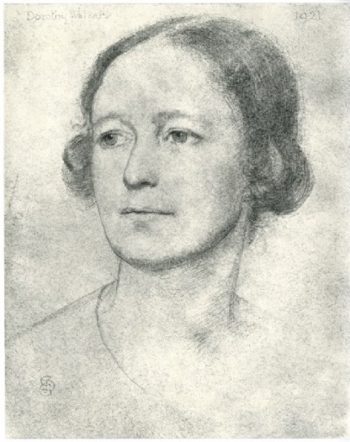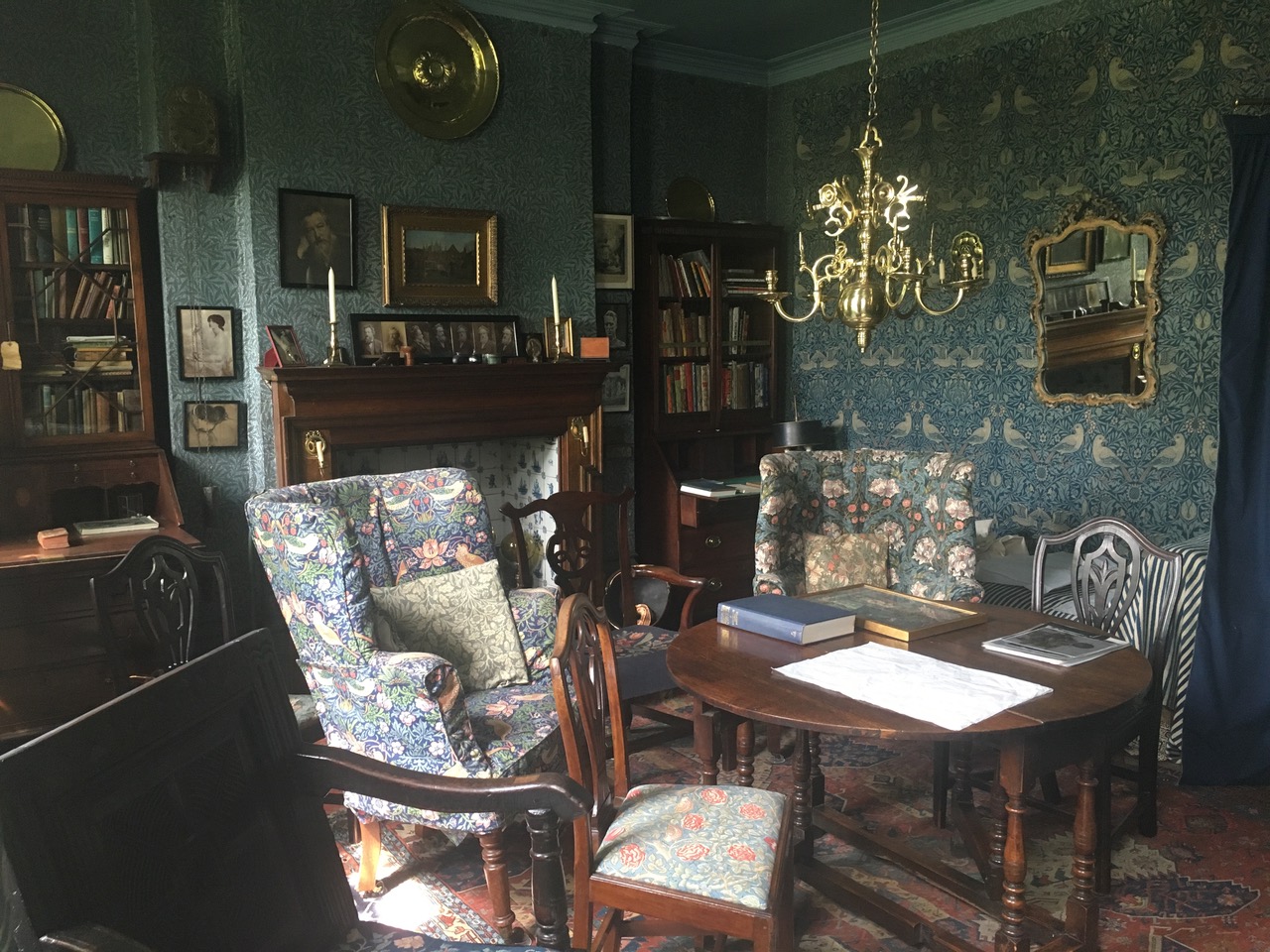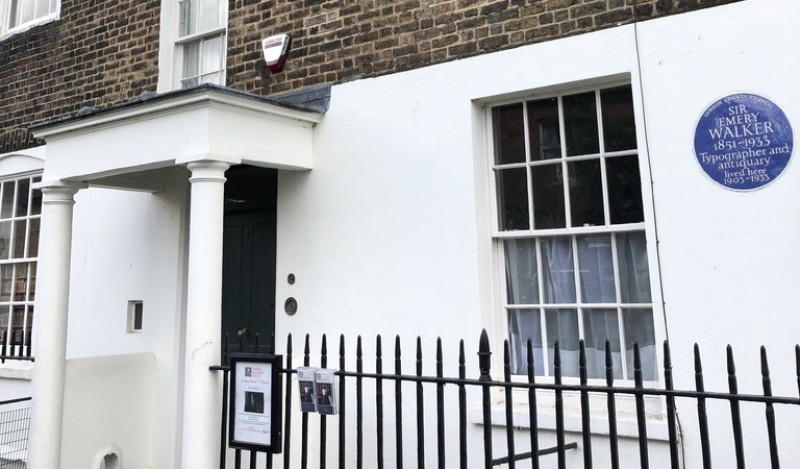May Morris and Dorothy Walker at Kelmscott Manor and 7 Hammersmith Terrace
We are delighted to feature this guest post by Dr. Imogen Hart, a scholar of art and design history. This post gives a preview of her forthcoming talk for the William Morris Society in the UK and her recently published article in the Journal of Interior Design. Other recent publications include journal special issues of Modern Craft on craft exhibitions and one of Art History on British Art and the Global. You can hear more from Imogen on Dorothy Walker and May Morris on November 14.
The designers and architects of the late nineteenth-century Arts and Crafts movement attempted to articulate the radical, democratic power of the domestic interior. The legacies of these ideas are shaped by house museums such as Kelmscott Manor (former home of William Morris) and 7 Hammersmith Terrace (known as Emery Walker’s House). Preserved by female descendants (May Morris and Dorothy Walker) together with their female companions, both houses facilitated ways of life that defy patriarchal and heteronormative domesticities. Their collections support narratives about William Morris and the Arts and Crafts movement, but they also have the potential to tell other stories. Kelmscott Manor and 7 Hammersmith Terrace raise questions about authorship, appropriation and the nature of artistic agency.
The survival of Emery Walker’s House and Kelmscott Manor as heritage sites points to the relationship between preservation, maintenance and artistic creation. Both houses have connections to the Society for the Protection of Ancient Buildings, linking them to a specific tradition that puts the preservation of national heritage sites at the centre of architectural practice. Repeated claims that the interiors were unchanged since the time of William Morris or Emery Walker have tended to undermine the labor of caretaking, organizing, recording, and selecting that took place after their deaths. The process of preservation began while the houses were still being lived in. Acknowledging the work that has gone into producing these houses for more than a century allows us to examine critically their claims to preserve an authentic past. Kelmscott Manor and Emery Walker’s House provide an opportunity to explore the paradoxes involved in exhibiting the art of everyday domestic life and to consider the house museum’s potential contributions to feminist and queer cultural histories.

Portrait of Dorothy Walker in 1921, Courtesy of the Cheltenham Museum, https://www.cheltenhammuseum.org.uk/collection/dorothy-walker/
In an online talk hosted by the William Morris Society, I will compare May Morris and Dorothy Walker as preservers and curators of their homes, exploring how the legacies of the Arts and Crafts movement are shaped by house museums such as Kelmscott Manor and Emery Walker’s House. The talk draws on my research for my recent article in the Journal of Interior Design, in which I argue that one strategy for exposing and challenging hidden biases in the field is to recognize home making, preservation, and curating as forms of creative labor that have made crucial contributions to the history of interior design. For the article version, see Imogen Hart, “May Morris, Dorothy Walker, and the Legacies of the Arts and Crafts interior,” Journal of Interior Design, vol. 48, no. 4, December 2023, published online November 4, 2023 https://doi.org/10.1177/10717641231194007.

